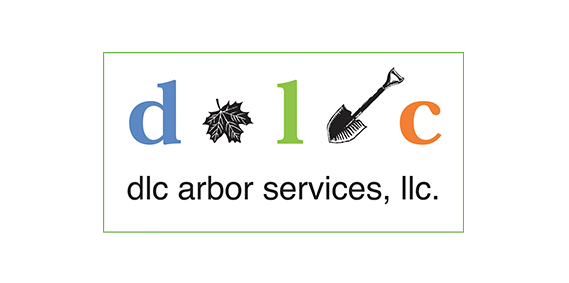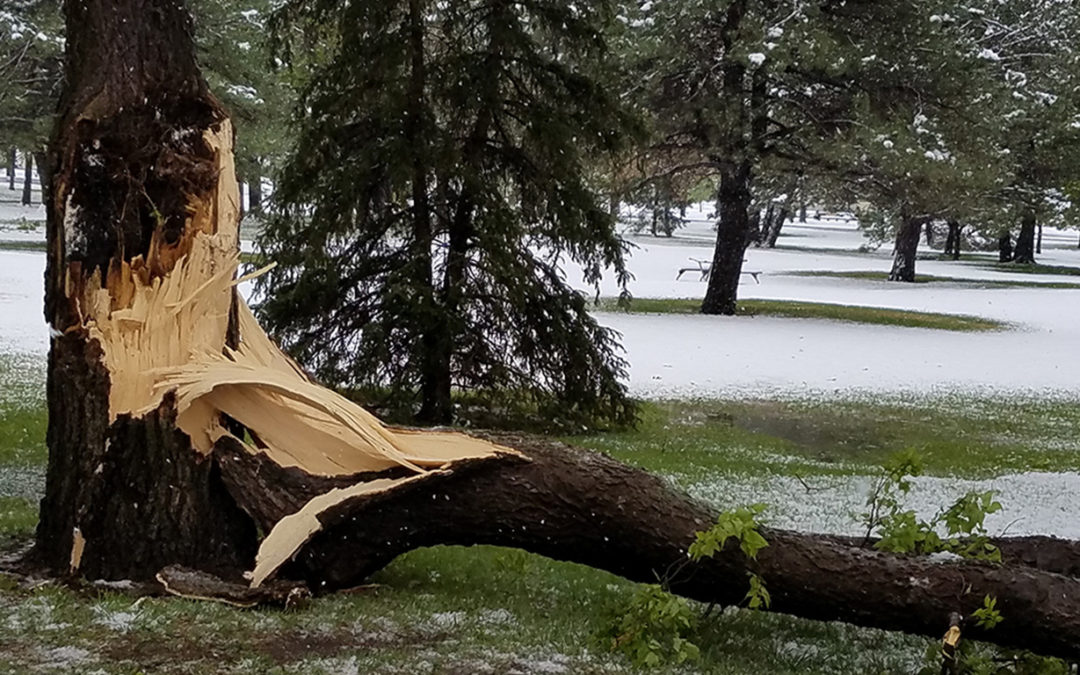Snowstorm Tree Damage Prevention
What is the greatest threat to your trees here in the Denver area? It’s not an insect or disease; it is snow, or more specifically, snow when leaves are on the tree. The following factors cause snowstorm damage to trees:
- Heavy snowstorms when trees are leafed-out in the early Spring or the Fall, cause branch breakage or the entire tree to fail.
- Landscape trees without proper pruning grow erratic with weak branches, so they cannot tolerate heavy snow and wind loads.
- Young trees pruned incorrectly by homeowners or tree companies break during heavy snowstorms.
The arid, high-plain along the Front Range has never been friendly to trees, except for a few cottonwoods here and there along creeks. Cottonwoods evolved into the “NFL linemen” of trees with large, burly branches that withstand heavy wind and snow. They can produce new leaves and growth-ring following a hard freeze in late Spring.
If you’re asking what is a great tree to plant in Denver, basically, the answer is none. However, when humans move into an area, trees follow. They provide shade, windbreaks, lumber, fuel, food, and comfort. Settlers, desperate for trees, planted their favorites from their Northern and Eastern birthplaces. These trees originally evolved in a climate with long, cold winters that stopped on a dime around Easter and didn’t start until around Thanksgiving. These trees are used to a long growing season with little snow. In Colorado, it snows as early as the first week of September and into the second week of June, which wreaks havoc on leafed-out trees. Trees need complete life-support that includes watering and pest control in addition to pruning.
In their native forests, crowded trees grow tall and narrow to reach the sunlight directly above. They developed one dominant trunk with short, narrow branches. Time has shown that this form is best for tolerating wind and snow. In landscaped areas, trees crowns are wide and the branches grow vertically, preventing the formation of a dominant, central trunk. This form breaks easily under the weight of heavy snow. Most people call this storm damage, but a better term is weak tree damage. Fortunately, DLC Arbor Services understands how to prune your trees so they can tolerate and thrive in the Denver area.
Standards-Based Custom Pruning
A tree needs pruning five times in its first 25 years to correct weak and erratic growth that naturally occurs in the landscape. DLC Arbor’s custom pruning promotes one dominant central leader and evenly spaced branches that are less than half the diameter of their parent branch. No branch should grow taller than 1/3 the height of the tree’s crown. Low branches are kept small and systemically removed for pedestrian, building and vehicle clearance, eventually pruned to at least 8 feet above the ground and 14 feet over city streets.
DLC Arbor Service’s custom pruning approach is backed up by science and accepted tree industry standards. But very few tree service companies do it. Why? Because it requires a knowledge of tree physiology, training and years of practice. Since most homeowners are not arborists, tree pruners learned that they get paid for poor quality pruning that doesn’t address the needs of the tree. Smart tree service consumers who want quality service will hire companies like DLC Arbor Services with an ISA Certified Arborist who prescribes tree pruning and follows tree industry standards.
Proper Pruning and Young Tree Training
Training or correcting a tree means removing defective growth and leaving desirable branches. We prune forked branches that are 50% larger than the diameter of the parent branch, or we remove the branch at its lowest or first fork to stop addition forking as the branch grows. We reduce or remove any vertical branches to a lateral or parent branch. We avoid pruning the dominant central leader to promote its maximum growth rate. These changes transform a wide-spreading crown into a more pyramidal form. This pyramidal form tree keeps branches from shading each other and reduces the likelihood of storm or weak tree damage.
DLC Arbor’s tree pruning prepares trees for Denver’s unpredictable weather. An additional benefit to standards-based pruning is trees grow to resemble the strength and beauty of trees in their native environment. Our ISA Certified Arborist provides a custom analysis and prescription for pruning a tree. Our well-trained, conciseness tree crews follow our arborist’s instructions. We’ve earned the moniker “Denver’ Trusted Tree Care” through our expertise, fair prices, and dependability.”
Contact us calling 303-378-8000 before the snow falls on your tree with leaves!


Recent Comments